

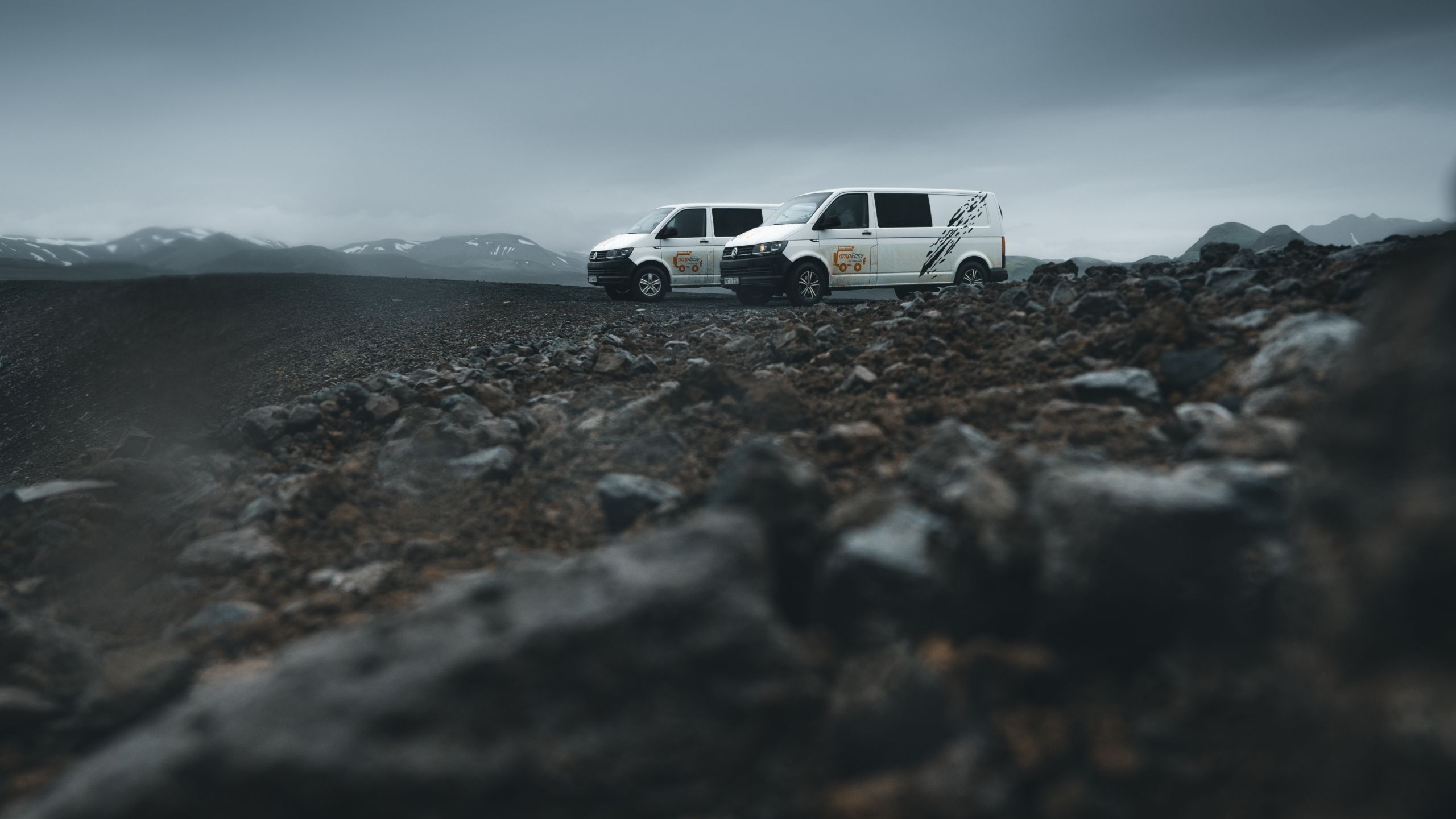
Get to know Iceland
Last Edit: June 8th, 2020.
F-Roads can be bad; there are unbridged rivers, slippery mud, and even snow, so be careful.
If you are traveling to Iceland during the summer months, it is tempting to go and check out the highlands.
The highlands are either a magical place, filled with moon-like landscapes and contrasting colors, or inhospitable and desolate; it just depends on how you look at it. So get ready for your next Iceland Highlands camper experience!
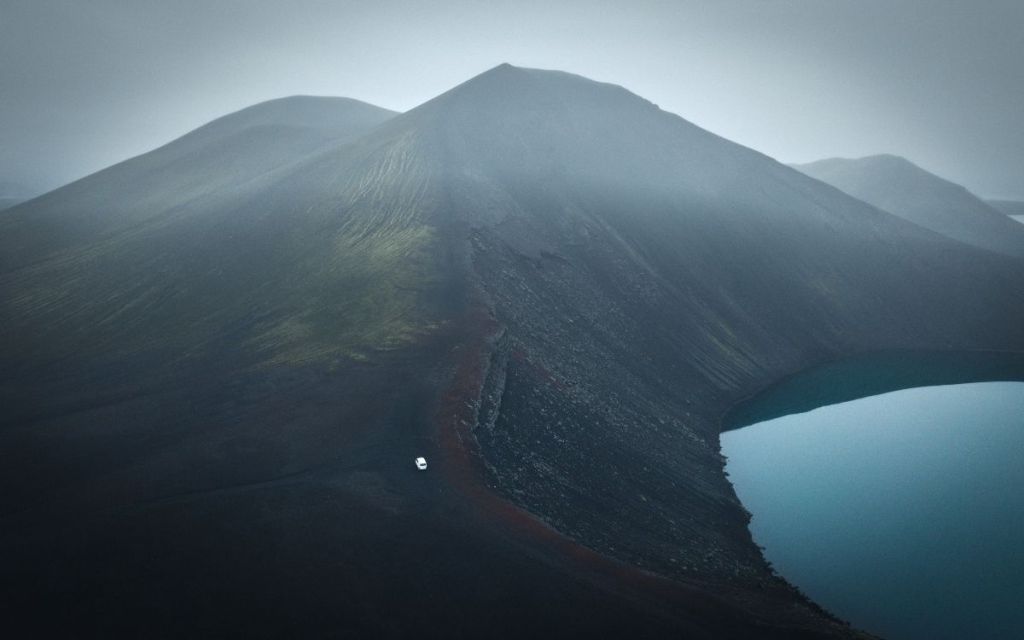
We, of course, think the highlands are otherworldly and want as many of you to check it out if you can. However, there are a few things you need to consider before going there.
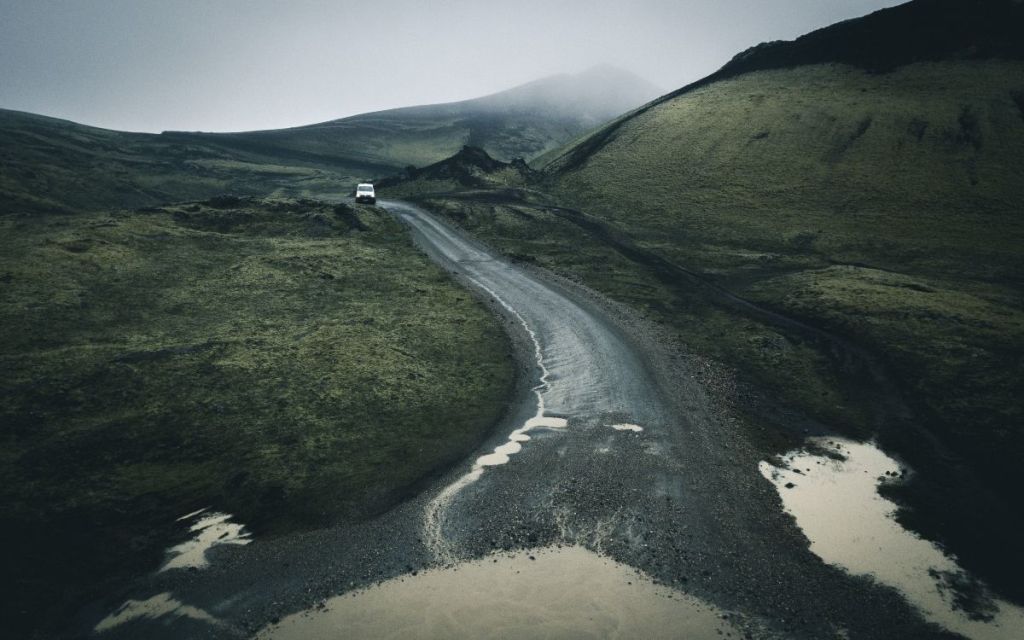
F-roads aren’t accessible all year round and can sometimes be pretty hard to drive. Because they are generally closed over the winter months, snow, ice, and water can make them incredibly difficult to drive, especially in spring and early summer. Some roads are hardly maintained, so you will need to take extra care while driving those roads and never go faster than you think you can drive. We advise people to go slower.
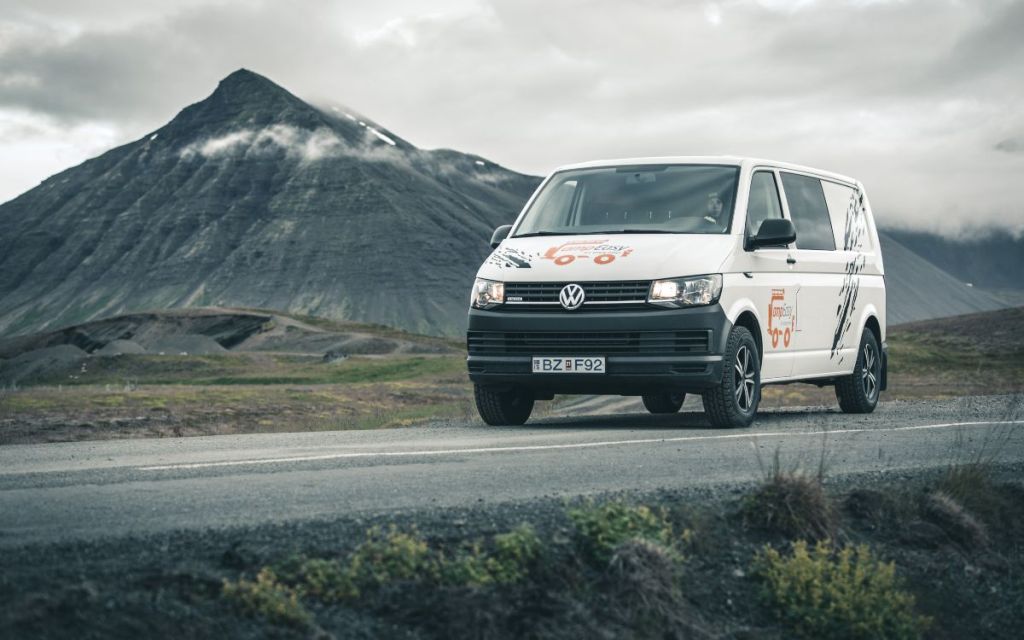
No, but our Easy Clever 4×4 and the Easy Viking 4×4 campers are perfect to drive those muddy, poorly maintained mountain roads.
The camper has larger tires than our other campers, a raised chassis, and a 4×4 drive. It also has a mounted spare tire on the back.
Like all other of our campers, the Easy Clever and Easy Viking come equipped with all the essentials you need for a great camper holiday in Iceland, such as thick duvets, pillows, and linen, refrigerator, sink with running water, kitchenware, USB charging station, gas stove, curtains, tinted windows and so much more.
Please notice there is no shower or toilet in the camper, so if you are in the highlands, we encourage you to stop when you see a campsite or an information center and use their facilities (we now offer special travel toilets for just that). We’ve made some maps to help you plan.
The campers have three and five seats, respectively, sleeping space for three to five people, and automatic transmission.
According to Icelandic law, campers must be camped at campsites overnight.
Oh, where to begin? There is so much in the highlands that is worth seeing, Lakagígar and Eldgjá, two volcanoes responsible for two of the largest and deadliest eruptions in human history. Then there is Landmannalaugar, with its beautiful colorful mountains and geothermal springs you can bathe in, and Sprengisandur desert. Other places of interest are Kerlingarfjöll and Hveravellir, two geothermally active regions in the west highlands. All of which you can read about in our Highland Guide.
It is also possible to cross the highlands from South Iceland to North Iceland from the small town of Hella. However, to give you an idea of the roads, the route over the highlands is about 200 kilometers shorter than driving all of West Iceland, but it will still take you just about the same amount of time to drive the highland road.
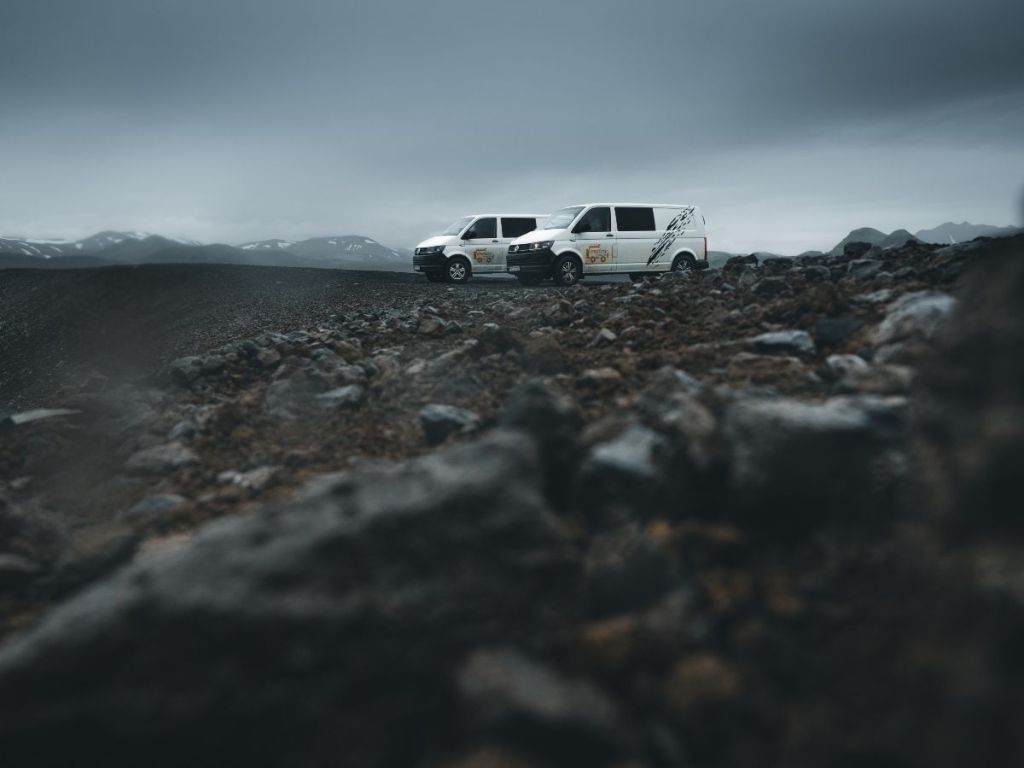
The weather can get bad in the Icelandic highlands, despite summer. So, it is pertinent you check road conditions before you leave on Road.is, you can also check the weather in the included Tablet once you hit the road
F-Roads can be bad; there are unbridged rivers, slippery mud, and even snow, so be careful. Please note that you cannot cross rivers (updated: you now can cross rivers with some extra insurance options) on the Easy Clever camper. It is not equipped for it (we made a mini snorkel and other adjustments). If there are bridges, they often have only one lane, so if someone is coming from the opposite direction, make sure he gives way before you cross the bridge.
One last thing: All off-roading is illegal in Iceland. Even if you see tire tracks, do not go off the road. Icelandic nature is very fragile, and even if it seems like it is just a wasteland, the tire tracks will stay there for decades, and the flora might be irreversibly damaged.

CampEasy Opening hours 09:00-16:00
Learn more about Self-Service
A minimum of 20 hours notice is required to use the booking engine. Click here to contact us directly for a booking less than 20 hours from now.
Change Date